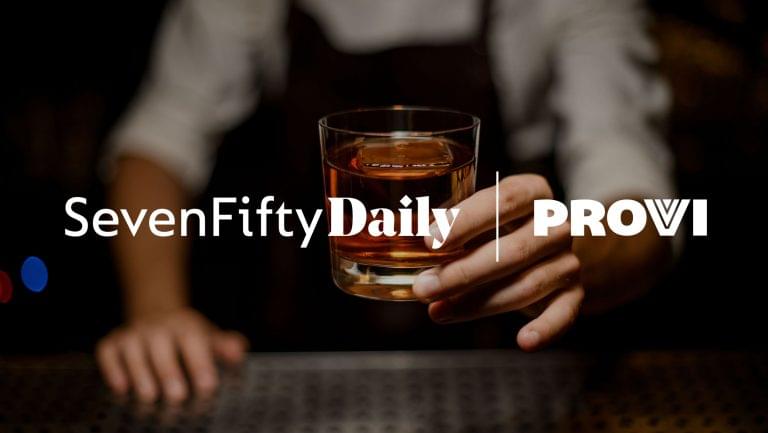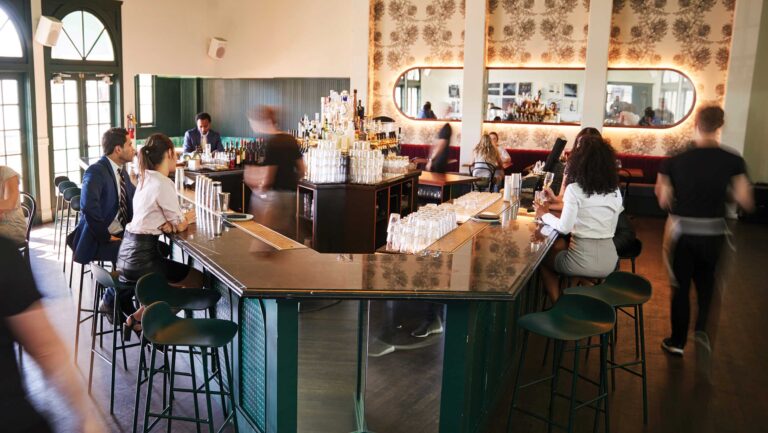Supply chain delays and climate change issues have led to rising prices and a shorter supply of some of the wine world’s most popular regions. The beverage alcohol industry began feeling the effects of these issues well over a year ago and most of the problems are yet to be solved. While there are no direct replacements for regions such as Champagne, Burgundy, or Sancerre, retailers need to keep their shelves filled with bottles at price points and styles that give their customers what they want.
Top retailers are getting creative. They are seeking out new producers from little-known subregions or looking further afield to under-explored corners of the wine world to keep the selections unique—and profitable. “It’s our job as the bridge between the producers and the consumers to educate the latter that there’s more products of quality out there than they could have imagined,” explains Phil Cerrito, the director of wine at Cool Vines in New Jersey.
At my shop, Copake Wine Works, I’ve experienced firsthand how difficult it has become to acquire wines and spirits from certain categories. I reached out to my fellow retail professionals across the country to learn what wines and spirits they’re ordering when certain in-demand categories get held up in supply chain crunches.

Don’t miss the latest drinks industry news and insights. Sign up for our award-winning newsletters and get insider intel, resources, and trends delivered to your inbox every week.
Champagne Swaps
Balfour Wines at Hush Heath Estate 1503 Dry Rosé NV, Kent, England
Recommended by Phil Cerrito, director of wine, Cool Vines, New Jersey
While Cerrito doesn’t see any direct substitute for Champagne, “It’s our job to let our customers know there’s more to the wine world than magazine advertisements would lead them to believe, and that applies to regions all over the globe.” This is where English sparkling wine comes in. “While comparisons to places like Champagne surely help introduce the consumer to regions they may not have considered in the past, I think it’s important for these areas to stand on their own merits,” says Cerrito. It’s one of the fastest growing categories on the Cool Vine shelves, with this aperitif-style rosé from Kent as a prime example. “Balfour Wines out of Kent offers an excellent lineup of cuvees, at some of the most approachable price points on the market. The consumer response to the quality-price ratio has been excellent, and I really enjoy the wines myself.”
Caves Naveran Cava Brut Nature 2020, Catalonia, Spain
Recommended by Andrea Bergner, purchasing manager, Vino di Vino, Boston, Massachusetts
Andrea Bergner, the purchasing manager at Vino di Vino’s four shops in the Boston area, has started to prepare the staff to explain the upcoming Champagne price increases to their customers. “After visiting the area earlier this year, I heard from many winemakers how much glass bottle prices are increasing, how hard it is to get glass bottles, how labor costs are going through the roof or they can’t find workers, and how we should be prepared for these costs to continue to rise over the next couple of years.”
Meanwhile, there’s Cava, a category where Bergner has seen sales increase about 20 percent with the cost staying relatively unchanged. “I’ll always be a champion for Cava as it’s made in the same way as champagne—three grapes, traditional method—but the cost usually lands somewhere around $20-$25 on the shelf, making it a perfect weeknight bubbly.” One of her favorites is Naveran, a grower-producer located in the Alt Penedès subregion outside Barcelona. “It’s organic, which is a huge selling point.” She adds, “the wine consistently receives high scores, and it’s honestly delicious.”

Sancerre Swaps
Domaine des Grandes Perrières Giennois Silex 2020, Coteaux du Giennois, Loire Valley, France
Recommended by Brooke Sabel, director of wine, Gary’s Wine & Marketplace, New Jersey
Trying to keep Sancerre on the shelf has become the retail equivalent of musical chairs. Brooke Sabel, the director of wine at Gary’s Wine & Marketplace in New Jersey explains, “winemakers in Sancerre faced tough challenges nearly every day in 2021. Yields were significantly down with some producers being down as much as 80 percent. Add to that rising costs along with supply chain delays—you need to provide alternatives.” She recommends looking at nearby Loire Valley subregions such as Menetou Salon and Coteaux du Giennois for crisp citrus- and mineral-driven wines. Customers who are willing to stray from the familiar regional brand name will find bottles like Sable’s recommendation from Domaine des Grandes Perrières. “It’s similar to Sancerre but at a fraction of the price.”
Massican Annia White 2021, Napa Valley, California
Recommended by Jake Lewis, head of buying and operations, Convive Wine & Spirits, New York City
Sancerre’s price increases provide retailers an opportunity to introduce new wines to adventurous customers willing to explore unfamiliar regions. “So many Sancerres have been creeping closer to or are over $30 retail,” says Jake Lewis, the head of buying and operations at Convive in New York City. “Sauvignon Blancs from New Zealand are an option, but the profile is not quite what they’re looking for.” So for those willing to spend—and explore—he introduces them to the intensity, freshness, and Italian-leaning style of Dan Petroski’s Massican Sauvignon Blanc. “If this is a gateway to showing how great his wines are, I’m all about it.”

Burgundy Swaps
William Downie Gippsland Pinot Noir 2020, Victoria, Australia
Recommended by Gregory Stokes, owner, Accent Wine Parlor, Columbus, Ohio
Burgundy continues to be a heartbreak region. Gregory Stokes, the owner of Accent Wine Parlor in Columbus, Ohio, explains, “While the basic appellations (Bourgogne, Macon-Villages, etc.) seem to still be available, villages and premier cru are evaporating and Grand Cru offerings are basically non-existent. A compounding issue is that burgundy prices are going up 30 percent this year.” But for customers willing to experiment, there’s an upside. “For the price of a village-level Burgundy, people can afford some of the best that other countries have to offer,” says Stokes. “We’ve been doing very well with William Downie’s Pinot Noir from Gippsland, Australia. It offers an Old World sensibility with lower alcohol levels and that classic smoky earthiness that Burg hounds look for.”
Domaine Daniel et Julien Barraud Pouilly-Fuissé Sur La Roche Premier Cru 2020, Côtes Mâconnais, Burgundy, France
Recommended by Andrew Fortgang, owner, Flor Wine, Portland, Oregon
While there is still Burgundy to be found, you just have to deal with an arrival schedule that sometimes defies logic. “Burgundy has been wacky,” explains Andrew Fortgang, the owner of Flor Wine in Portland Oregon. “There are some domains whose wines arrive the same time as the east coast, and others months later. One famous Cote du Beaune producer, we received the ’18s this past fall, the ‘19s this spring, and I’m told I’ll have the ‘20s in December. I’m pretty sure their cellaring protocol has not changed.”
Fortunately, regions beyond the most famous villages of the Cote d’Or beckon. “We’ve definitely been up on moving people to the Côtes Mâconnais and Chalonnaise,” says Fortgang. Newly promoted premier cru sites offer further reasons to head south. “We love Barraud wines. The Pouilly-Fuissé ‘Alliance’, sourced from a few sites around Vergisson is a textbook expression of the appellation and a regular wine-list wine for us,” he says. “The Pouilly-Fuissé Premier Cru Sur La Roche is a standout in 2020 with oodles of ripe fruit shaped by a zippy chalky minerality. Definitely an earner of the premier cru status it now has.”

Rosé Swaps
Salvo Foti-I Vigneri Sicilia Vinudilice Rosato 2020, Sicily, Italy
Recommended by Jill Bernheimer, owner, Domaine LA, Los Angeles, California
“Oddly, it’s interesting rosés that are impacted,” says Jill Bernmeimer, the owner of Domaine LA in Los Angeles. Smaller production favorites like Lamoresca, Rabasco, and Gut Oggau are trickling in, often not due to arrive until the fall. “And we have not heard a peep about Domine Tempier, though we have just started seeing a couple of other Bandols trickle in.” Bernheimer tries to fill the holes with 2020s that are still in the market, but this takes some creative thinking. “Something like Salvo Foti 2020 works for people who might like Tempier. It’s a combination of things they might be seeking—brand, style, a notion of quality,” she explains. “My approach is to express to them that Foti is at that same caliber—and that his rosato is thoughtful, expressive, delicate, but also impactful.” These descriptors put the customer at ease, “so they know they are getting pretty much everything they came in looking for, short of the specific brand.”
La Staffa Rosato 2018, Marche, Italy
Recommended by Lance Lemon, owner, RichWine RVA, Richmond, Virginia
“I have noticed that we are starting to get more back vintages with rosé, but I must say I have been really impressed with the juice,” says Lance Lemon, the owner of RichWine RVA, an online shop based in Richmond, Virginia. “I am not talking five years back, but a few years back. I’m actually cool with that.” With well-known producers in even shorter supply in smaller, secondary markets such as Virginia, selectively ignoring the old adage to always buy the most current vintage can result in some stellar values—and potentially better wine. “I find that the extra time can allow the wine to settle nicely,” he explains. “Recently, I really enjoyed a 2018 bottle of rosato from La Staffa that was drinking really well—and obviously, it’s coming in at a good price because of the vintage.”

Spirits Swaps
Amara Rossa Blood Orange Liqueur, Sicily, Italy
Recommended by Adriana Fabbro, buyer, Wine on Piedmont, Oakland, California
Getting over the brand name hurdle is even more difficult when it comes to spirits that are in short supply. “It’s not just a spritz. It’s an Aperol Spritz,” says Adriana Fabbro, the buyer at Wine on Piedmont in Oakland, California. To prevent customers from leaving the shop empty handed, she has found success recommending Amara Rossa. “It has a similar enough flavor profile to work in a classic spritz. It also lends that same appetizing ruby / blush sunset hue to your cocktail, and the color of the liquor itself is just gorgeous.” She offers easy adjustments to classic cocktail recipes so that customers understand how to work with the product’s greater flavor intensity and higher alcohol level. Fabbri also highlights the products Sicilian roots, “It is sustainably sourced from hand-picked oranges grown in Mount Etna’s volcanic soils and really conveys a sense of place, using mostly flora native to that place.”
Hillrock Solera Aged Bourbon, Hudson Valley, New York
Recommendation from my store, Copake Wine Works, Copake, New York
Trying to get your hands on certain big-name bourbons has become an ordeal. Between allocations and a monthly release schedule that can require an all-hands-on-deck approach to getting orders in, the effort needed to get a few bottles isn’t worth the time and attention that’s required. I’m sure it makes sense for shops with a core focus on spirits collectors, but for my shop, it doesn’t. Instead, I focus on the crop of local bourbons that are available in the Hudson Valley and beyond. Hillrock’s Solera Aged Bourbon is one of my favorites. The quality is excellent and the gorgeous square bottle is irresistibly fabulous—it’s a complete package that more than justifies the price.

Dispatch
Sign up for our award-winning newsletter
Don’t miss the latest drinks industry news and insights—delivered to your inbox every week.
Christy Frank is a partner at Copake Wine Works, a shop in the Hudson Valley of New York. She is an advanced sommelier with the Court of Master Sommeliers and holds the WSET Diploma in Wines.







